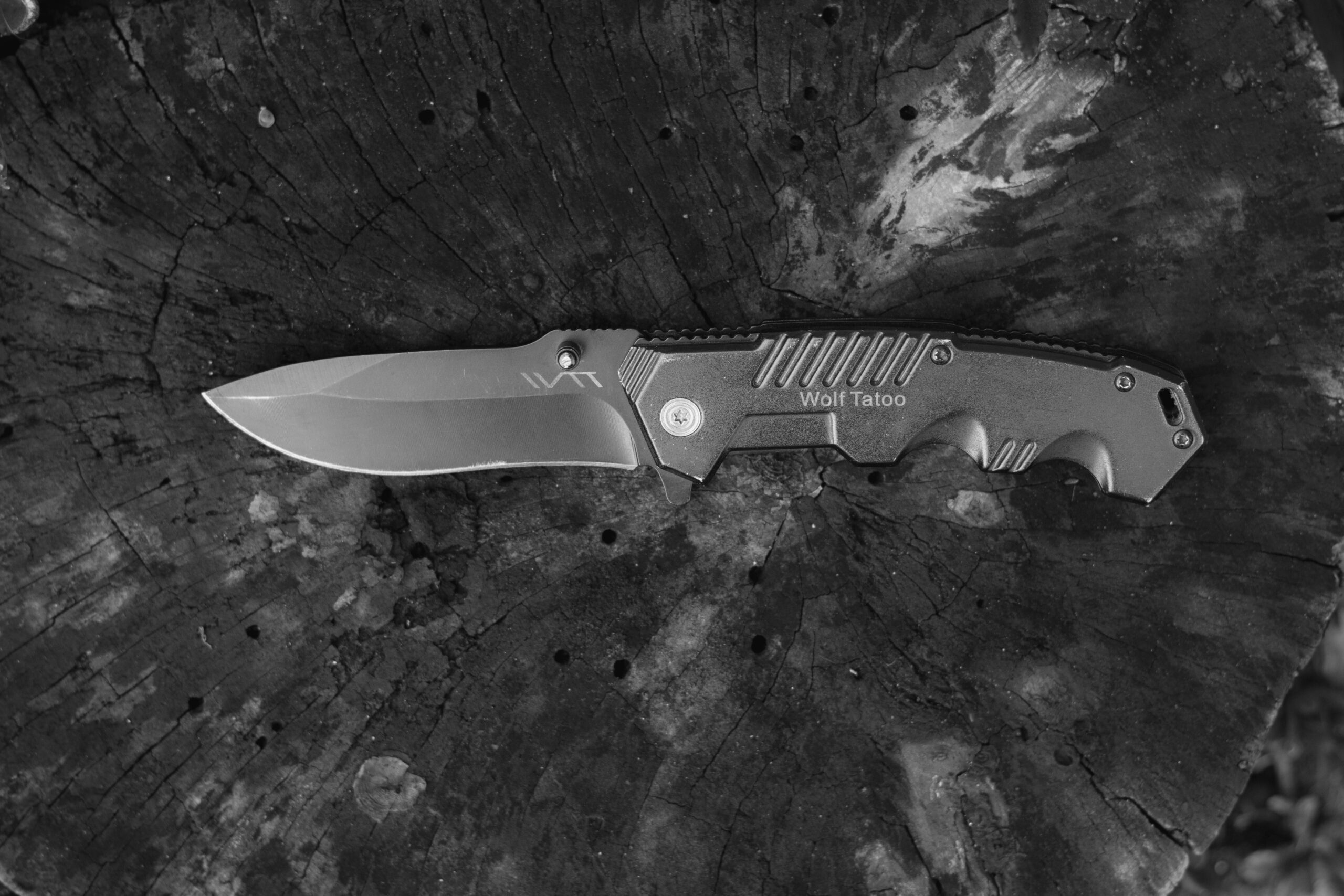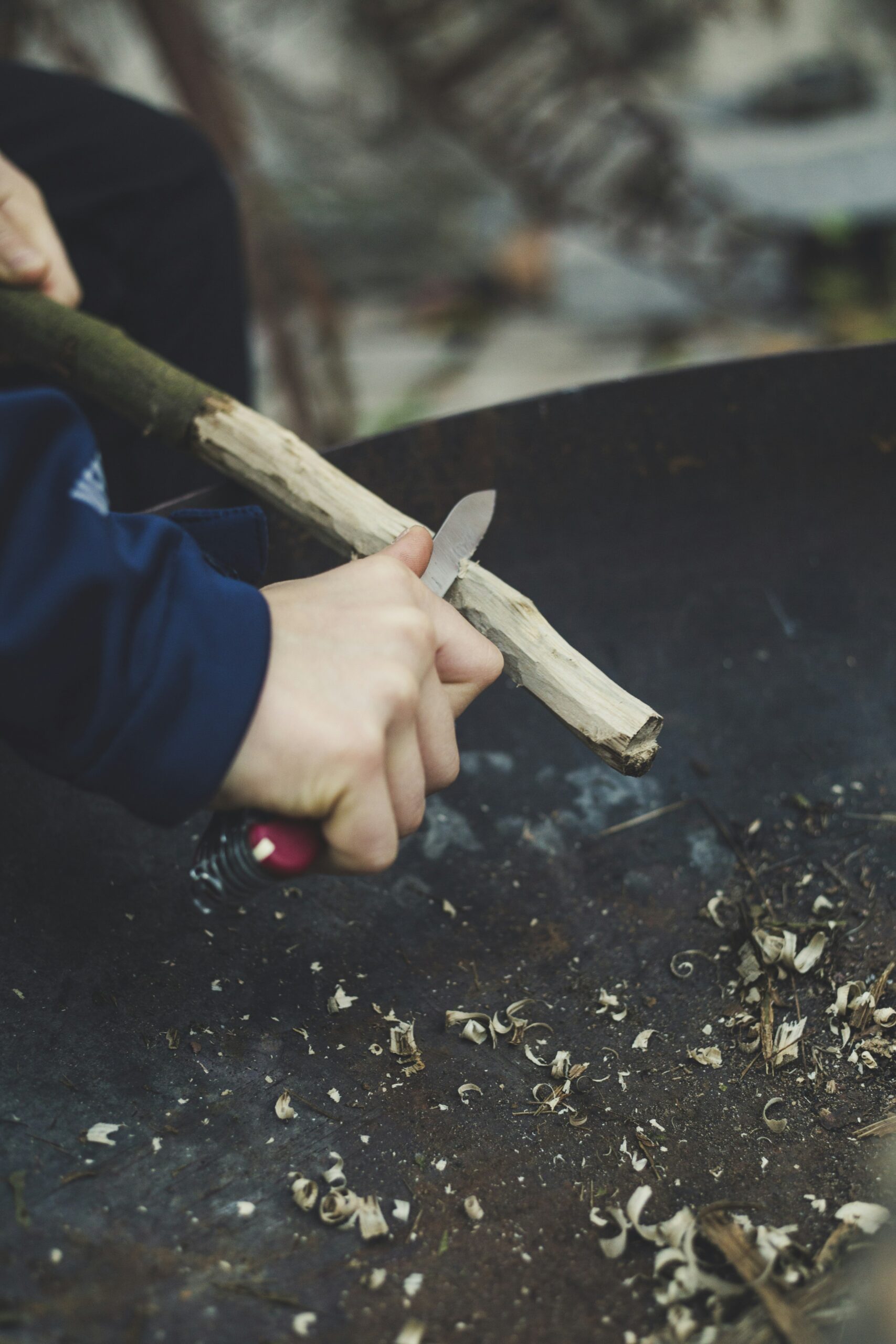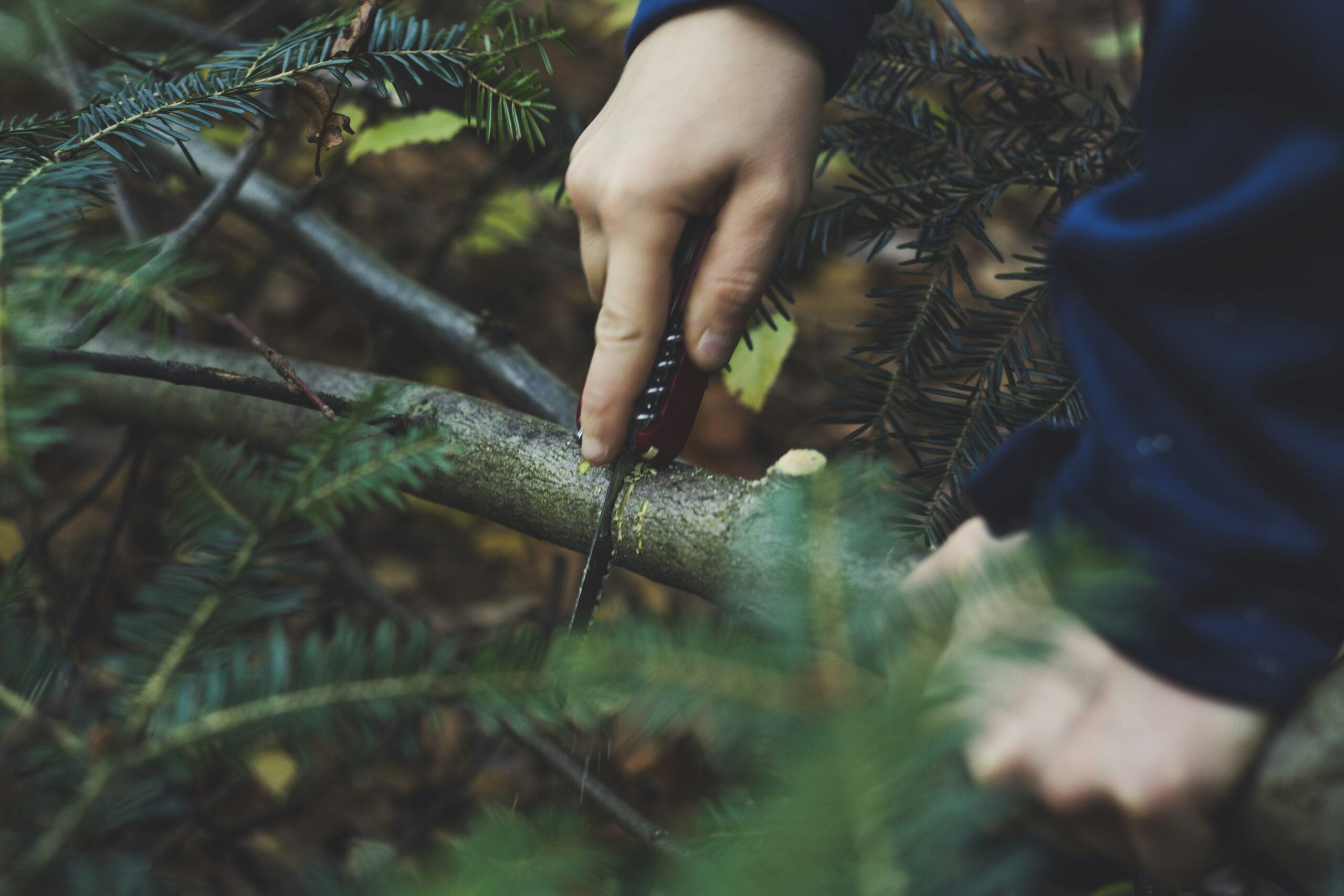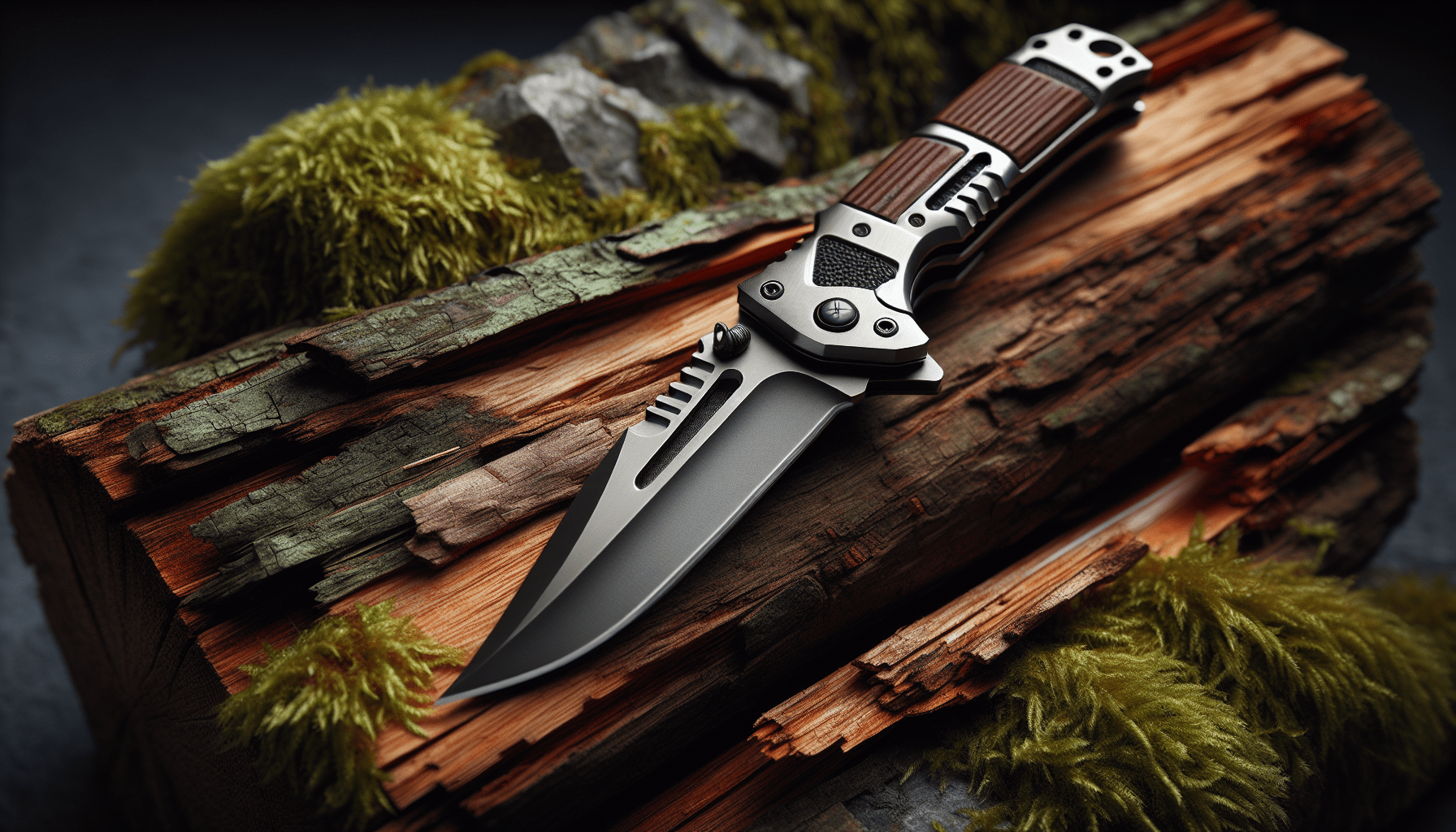When diving into the world of survival knives, you quickly realize that not all blades are created equal. To ensure you’re ready for any adventure nature throws your way, it’s essential to consider several crucial features that can make a significant difference in your outdoor experience. From blade material and length to handle design and additional functionalities, selecting the right survival knife is about balancing durability, versatility, and your specific needs. In this article, we’ll guide you through the must-have attributes of a survival knife, ensuring you’re well-prepared for your next wilderness journey. Have you ever found yourself in a situation where you wished you had the perfect survival knife? Whether you’re an experienced outdoorsperson or someone who loves the occasional adventure, having the right survival knife can make a tremendous difference. But how do you choose the right one?
Why a Survival Knife is Essential
Before diving into the specific features to look for, let’s talk about why a survival knife is such an essential tool. Imagine you’re out in the wild and need to build a shelter, start a fire, or prepare food. A high-quality survival knife can be your best friend in such scenarios. It’s not just a blade; it’s a multipurpose tool that can save your life in an emergency.
Versatility and Utility
Survival knives are designed to be versatile. They’re meant to perform a range of tasks, from slicing and cutting to chopping and prying. Unlike specialized knives, a survival knife needs to tackle numerous jobs. The versatility offered by a quality survival knife makes it an invaluable component of your outdoor gear.
Durability
Another crucial aspect is durability. When you’re out in the wild, you can’t afford for your knife to fail you. The knife needs to withstand harsh conditions and extensive use without dulling or breaking. That’s why choosing a knife made from robust, high-quality materials is so important.
Key Features to Look For in a Survival Knife
So, you know why a survival knife is essential, but what makes one better than another? Here are the key features to consider when choosing your survival knife.
Blade Material
One of the most important aspects to look at is the blade material. The material affects durability, ease of sharpening, and resistance to corrosion.
| Blade Material | Pros | Cons |
|---|---|---|
| Stainless Steel | Corrosion-resistant, requires less maintenance | Generally less durable than carbon steel |
| Carbon Steel | Extremely durable, sharpens easily | Susceptible to rust and corrosion |
| High Carbon Stainless Steel | Combines rust resistance with durability | Can be more expensive |
Blade Type
The blade type you choose will largely depend on your specific needs and what you envision using your knife for the most.
Fixed Blade
A fixed blade is generally stronger and more reliable than a folding knife. This is the type of knife you want for rigorous tasks such as chopping wood or prying things open.
Folding Blade
On the other hand, if you’re looking for something more compact that you can easily carry around, a folding blade might be more appropriate. However, bear in mind that a folding blade usually isn’t as strong as a fixed blade, which could be a major downside in a survival situation.
Blade Length and Thickness
The length and thickness of the blade significantly impact its usefulness.
- Blade Length: Ideally, a survival knife should have a blade length between 4 to 7 inches. Too short, and it may not be practical for heavier tasks like chopping. Too long, and it becomes unwieldy and cumbersome.
- Blade Thickness: A thicker blade offers better durability and can handle more brutal tasks like batoning (splitting wood by striking the back of the knife with a mallet or another piece of wood).
Blade Shape
The shape of the blade also matters. Different shapes serve different purposes.
- Straight Edge: Good for general cutting and slicing tasks. Easy to sharpen.
- Serrated Edge: Useful for cutting through tough materials like rope or fabric. However, it can be more challenging to sharpen.
- Drop Point: Known for its versatility and robust tip, suitable for a wide variety of tasks.
- Clip Point: Features a thinner, more controllable tip which is great for detailed tasks but may not be as strong as a drop point.
Handle Material and Design
Your knife’s handle is more critical than you might think. An uncomfortable or slippery handle can make using your knife a hassle and may even lead to accidents.
Handle Materials
| Material | Pros | Cons |
|---|---|---|
| Wood | Comfortable, aesthetic | Susceptible to weather conditions, can swell or crack |
| Rubber | Excellent grip, shock-absorbing | Can degrade over time |
| G10 (Fiberglass Laminate) | Extremely durable, weather-resistant | Can be slippery when wet |
Handle Design
Look for a handle that provides a secure grip, even in wet conditions. Textured designs and finger guards can be added benefits. Comfort is key—you’ll want a knife that feels like an extension of your hand.
Tang
The tang is the portion of the blade that extends into the handle. A full tang, where the blade extends the entire length of the handle, provides the most strength and durability. In contrast, a partial tang may be lighter but is generally less durable.
Types of Tang
| Tang Type | Pros | Cons |
|---|---|---|
| Full Tang | Maximum strength and durability | Heavier |
| Partial Tang | Lighter | Less durable, prone to breaking |
| Rat-Tail Tang | Lightweight, cheaper | Least durable, not suitable for hard-use knives |
Sheath
A good sheath will protect your blade when not in use and allow for easy access when you need it. Consider the following when choosing a sheath:
- Material: Leather is durable and traditional, but synthetic materials like Kydex offer better weather resistance.
- Mounting Options: Look for a sheath that offers various mounting options, such as belt loops or MOLLE compatibility (a military acronym for Modular Lightweight Load-carrying Equipment).
- Retention: The sheath should hold the knife securely but allow for quick and easy access when needed.

Additional Features to Consider
While the core features mentioned above are critical, there are additional features you may want to consider based on your specific needs.
Pommel
Some survival knives come with a pommel that can be used as a hammer. This can be especially handy for tasks like driving in tent stakes or crushing items.
Lanyard Hole
A lanyard hole allows you to attach a cord for better grip or for attaching the knife to your gear, making it less likely to be lost.
Fire-Starting Capability
Certain survival knives come with integrated fire-starting tools like a ferrocerium rod. This can be a handy feature if you’re in a situation where you need to start a fire quickly.
Gut Hook
A gut hook is useful for field dressing game. However, if you don’t hunt, you might find this feature unnecessary and it may even get in the way.
What to Avoid
While there are many excellent features to look for, there are also some pitfalls you should avoid when choosing a survival knife.
Overly Complex Designs
A survival knife should be straightforward and functional. Overly complex designs with multiple attachments or gimmicks can reduce the knife’s reliability and durability.
Poor Lock Mechanisms (for Folding Knives)
If you opt for a folding knife, make sure it has a strong, reliable lock mechanism. Poor lock mechanisms can fail under pressure, rendering the knife useless and potentially dangerous.
Cheap Materials
While it may be tempting to save a few dollars, a cheap knife can fail when you need it most. Investing in a high-quality knife made from durable materials is always worth it.

Popular Survival Knife Brands
If you’re looking for reputable brands that consistently produce high-quality survival knives, consider the following:
| Brand | Notable Models |
|---|---|
| ESEE | ESEE 5, ESEE 6, Izula |
| Gerber | LMF II, StrongArm |
| KA-BAR | Becker BK2, Full-sized USMC |
| Benchmade | Bushcrafter 162 |
| Morakniv | Companion, Garberg |
| Fallkniven | F1, A1 |
Each of these brands has built a reputation for quality and reliability. Their knives are trusted by professionals and outdoor enthusiasts alike.
Personalizing Your Choice
Choosing the right survival knife can be a deeply personal decision, influenced by your specific needs, habits, and even personal preferences. Here are some tips to help you personalize your choice:
Consider Your Environment
The conditions in which you’ll be using the knife matter. For example, if you’ll be in a wet or humid environment, you might prioritize a stainless-steel blade for its rust-resistant properties. Conversely, for colder climates, you might focus on a handle material that won’t become slippery or brittle in freezing temperatures.
Assess Your Typical Use-Cases
Think about what you’ll primarily be using the knife for. If you often find yourself needing to chop wood, a thicker, heavier blade might be more suitable. If you’re more likely to use the knife for detailed tasks like carving or food preparation, a slimmer blade with a sharp point might be more beneficial.
Hand Size and Shape
Everyone’s hands are different, and what feels comfortable to one person might not feel the same to another. Don’t hesitate to try out several knives to see which one feels the most comfortable and balanced in your hand.

Maintenance and Care
A good survival knife is an investment, and like any investment, it requires care to perform at its best. Here are some essential maintenance tips:
Regular Cleaning
Clean your knife after each use, especially if it’s come into contact with food, saltwater, or other potentially corrosive substances. Use warm water and mild soap, and dry the knife thoroughly to prevent rust.
Sharpening
Keep your knife sharp, as a dull blade can be more dangerous and less effective. Depending on the material of your blade, you might need a specific type of sharpener. Regular honing with a sharpening stone can help maintain the edge.
Lubrication
Occasionally, apply a light oil to the blade to prevent rust and ensure smooth operation. This is particularly important for folding knives with moving parts.
Sheath Care
Don’t neglect the sheath. If it’s made of leather, condition it to keep it from drying out and cracking. If it’s synthetic, ensure it remains clean and free of debris that could scratch or dull the blade.
Legal Considerations
Before heading out with your new survival knife, make sure you understand the legalities of carrying such a tool in your area. Laws can vary widely, and it’s crucial to be informed to avoid any legal issues.
Blade Length Restrictions
Some jurisdictions have specific restrictions on blade length. Make sure your chosen knife complies with local laws.
Carrying Methods
In certain places, how you carry your knife can make a difference. For example, concealed carry of a knife might be illegal, while carrying it openly could be permitted.
Specific Prohibitions
Certain types of knives, such as those with automatic blades or knuckle guards, may be prohibited in some areas. Always double-check the legality of your knife’s specific features.

Conclusion
Choosing the perfect survival knife involves considering various factors, from blade material and length to handle design and additional features. While there’s no one-size-fits-all answer, understanding these key elements can help you make a more informed decision.
A survival knife is more than just a piece of gear; it’s a tool that can make or break your outdoor experience. Invest time in finding the right one for you, maintain it well, and it will serve you faithfully in countless adventures and potentially life-threatening situations.
So, next time you head out into the wild or prepare for an emergency, remember that having a well-chosen survival knife at your side can make all the difference. Happy adventuring, and stay safe!

